Review: 2010 Honda Insight EX
Less than a generation ago, speed was the name of the game. Hands-on automotive enthusiasts would swap their car’s two-barrel carb for a four, replace the manifold, straighten the exhaust, anything and everything to make their ride go faster (at least in a straight line). Even the mechanically ignorant knew that power equaled status, whether under-hood or at their fingertips (windows!). These days, consumption is no longer a disease—it’s an addiction. Where once we laughed watching my buddy Artie’s ’69 Camaro’s fuel needle fall, the new Honda Insight has a needle showing me how much fuel I’m saving. It’s not a very clever insight, but the Insight is a very clever car.
At first glance, the Insight reveals itself as the Prius’ fraternal twin. The flattering imitation separates the Insight from its dopey looking predecessor, and places the new car squarely on the Toyotagas – electric coattails. The Insight’s shape is pleasing, like a large juicer. It’s just not stirring. The Insight gets a bonus star for being a five-door, the practicality of which seems lost on my native country. It won’t be lost on the Insightful.
Who cares? The car’s raison d’être lies underneath the skin. Thin skin. While the Insight’s not as tinny as I’d expected, a word to the wise: don’t crouch behind the car when the shooting starts. What insulation I saw—looking around the spare tire—felt too light to exist. Of course, it’s all part of the mission: do less with less.
To that end, the Insight comes with a bigger version of the powerplant than the one powering the original, two-seat Insight. Honda’s Integrated Motor Assist (IMA) hybrid system is an 88 horsepower 1.3-liter four-cylinder gas engine with a 13 hp electric sidekick, served by a nickel-metal hydride battery pack. The electric motor powers the Insight up to 30 mph without any help. The engine turns off sometimes (e.g., when you’re looking for a parking spot, obeying the school zone speed limit or stuck at a light), but the engine’s shaft doesn’t cease so it’s not as disconcerting as it sounds.
The IMA’s performance is remarkable not for traditional thrills—the ’83 Civic was more fun to drive—but the ho-humness of the whole thing. The 2010 Honda Insight EX’s power comes on slowly and smoothly like an economy car. It’s not dangerously slow; there’s just no entertainment value. It’s not like you can downshift, spool up and goose the little bastard.
The Insight’s continuously variable transmission bars you from any thrill search. I’m pretty sure they sourced it from a dentist drill supplier. The sound alone dissuades you from hard acceleration. The Formula 1 style “gear-changers” on the EX’s steering wheel don’t help. How could they? It’s a CVT. I’m still trying to figure that part out. Anyway, the gear-changers are like flippers on a runway model. Like paddles on a submarine. I can’t . . . never mind. They’re only on the EX. Pretend they’re decorations.
The Insight’s ride was firm but not harsh and actually kind of tight. Up and down a few ramps I started wondering what the car would be like if we popped off the low rolling resistant tires and put some decent skins on the puppy. The response and roll hinted that the chassis was capable of much more than the rest of the car would ever allow.
Like the brakes for instance: antilock with electronic force distribution. The regenerative system stops the car well enough sending energy back to your batteries where it can do some good. But the system creates an odd drag and crusty feel that, again, dispirits the Transporter within. For regular old driving, though, no one’s going to complain.
Because they’re going to be paying attention to other things. You can see the 2010 Honda Insight EX’s owners paradise by dashboard lights. A digital speedometer sits center, in a halo, the shade of which tells you whether you’re driving like an Earth-loving angel or the speed-demon you’ve always been. The Insight provides its namesake in the form of graphs and charts you can scroll through to see your average miles per gallon, battery power, time until oil change, life, hit points and number of sparkly gems you’ve picked up on your journey.
It’s not a video game and I don’t mean to reduce the effect which is optimization of your car’s performance, something my buddies and I used to spend a lot of time doing. The measure’s just different. MPG over quarter mile time. An arguably more noble pursuit. Safer, too, the way Honda does it. The colors give you feedback without distraction. Brilliant.
Combined with the Insight’s Eco button—a kind of anti-Nitrous switch that puts the car into super conserve mode—the gauges and lights serve as new substitutes for a gear shift and tons of torque. It helps make you a more controlled, responsive driver . . . in terms of economy. I averaged 37 mpg. I know I can do better. It’s a different game and the Insight is pretty damn good at it. Toyota’s a playa. And, now, so is Honda.
More by Michael Martineck
Latest Car Reviews
Read moreLatest Product Reviews
Read moreRecent Comments
- Theflyersfan OK, I'm going to stretch the words "positive change" to the breaking point here, but there might be some positive change going on with the beaver grille here. This picture was at Car and Driver. You'll notice that the grille now dives into a larger lower air intake instead of really standing out in a sea of plastic. In darker colors like this blue, it somewhat conceals the absolute obscene amount of real estate this unneeded monstrosity of a failed styling attempt takes up. The Euro front plate might be hiding some sins as well. You be the judge.
- Theflyersfan I know given the body style they'll sell dozens, but for those of us who grew up wanting a nice Prelude Si with 4WS but our student budgets said no way, it'd be interesting to see if Honda can persuade GenX-ers to open their wallets for one. Civic Type-R powertrain in a coupe body style? Mild hybrid if they have to? The holy grail will still be if Honda gives the ultimate middle finger towards all things EV and hybrid, hides a few engineers in the basement away from spy cameras and leaks, comes up with a limited run of 9,000 rpm engines and gives us the last gasp of the S2000 once again. A send off to remind us of when once they screamed before everything sounds like a whirring appliance.
- Jeff Nice concept car. One can only dream.
- Funky D The problem is not exclusively the cost of the vehicle. The problem is that there are too few use cases for BEVs that couldn't be done by a plug-in hybrid, with the latter having the ability to do long-range trips without requiring lengthy recharging and being better able to function in really cold climates.In our particular case, a plug-in hybrid would run in all electric mode for the vast majority of the miles we would drive on a regular basis. It would also charge faster and the battery replacement should be less expensive than its BEV counterpart.So the answer for me is a polite, but firm NO.
- 3SpeedAutomatic 2012 Ford Escape V6 FWD at 147k miles:Just went thru a heavy maintenance cycle: full brake job with rotors and drums, replace top & bottom radiator hoses, radiator flush, transmission flush, replace valve cover gaskets (still leaks oil, but not as bad as before), & fan belt. Also, #4 fuel injector locked up. About $4.5k spread over 19 months. Sole means of transportation, so don't mind spending the money for reliability. Was going to replace prior to the above maintenance cycle, but COVID screwed up the market ( $4k markup over sticker including $400 for nitrogen in the tires), so bit the bullet. Now serious about replacing, but waiting for used and/or new car prices to fall a bit more. Have my eye on a particular SUV. Last I checked, had a $2.5k discount with great interest rate (better than my CU) for financing. Will keep on driving Escape as long as A/C works. 🚗🚗🚗



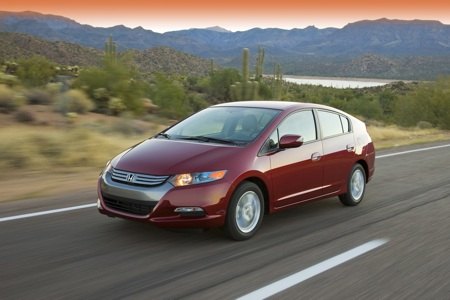




















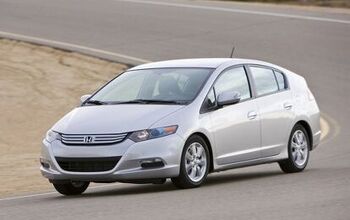
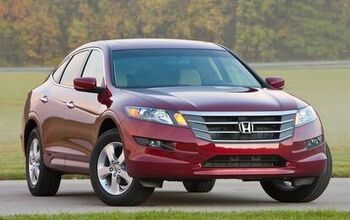
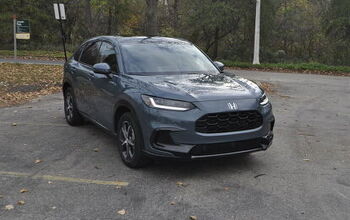

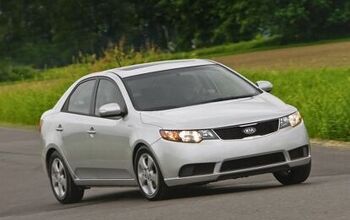










Comments
Join the conversation
Looked at the 2010 Insight in the showroom while my 2005 Acura TL was being serviced. With its fold-down rear seats, I'm pretty sure I can carry more and larger stuff in the Insight that I can in the TL. And I rarely have even two people in the car and never four. My '05 TL has all of 28,000 miles on it. Every day I drive to work eight miles one way on city streets. Not exactly high performance driving. My 228 horsepower V-Tech engine's computer informs me that I average 18 MPG ... and 18 MPH. I need 228 HP burning premium gas to average 18 MPH?? Yeah, right. This Insight golf cart fully loaded for $23K (including navi, MP3 input, HandFreeLink Bluetooth phone connectivity, USB input, cloth seats, 100k mile guarantee on the NiMH battery) looks like the perfect car to get me to and from work day after day in stop-and-go straight-line rush hour traffic on Pacific Coast Highway at 18 MPH. I have to admit I enjoy getting into my TL every day since I bought it and it is a very nice car indeed, but the Insight's reduced cost of ownership (gas, insurance, registration, etc) is looking pretty attractive.
My daughter who goes to college purchased a used 2010 Honda ex. She had been shopping around car dealerships looking for something within her price range with reliability and good gas mileage. Never having owned a Honda before, but knows a lot of people who do and questioning them first. All of her other vehicles she has had in the past seemed to end up being money pits, weather it be gas guzzlers and or mechanical problems. She found the Toyota Prius cost to be much higher, yes affordability comes in to play. She did purchase the 2010 Honda EX, and just loves it. She talks about how it teaches you how to be a better/more gas efficient driver, Loves the friendly dash board displays. And ( like most reviews ive read from other owners) , is getting an average of 45 mpg city, and closer to 55 mpg highway. For some student that has had the big engine vehicles to smaller but peppier cars, she still loves this Honda. And even the looks of the car, interior as well as exterior. She knew what she was looking for , what price range, and all the other factors upon buying a used vehicle. I'm sure she pissed off a lot to car dealership salesmen by walking away from them day after day. Also she had the Honda checked out by her own mechanic first, everything was ok except the rear tires had dry rot and were cracking, which the dealership agreed to replace and did. She has now been enjoying this car for quite some time now. No problems what so ever. I guess with reading all the personal reviews here, I just wanted to say that beauty is in the eye of the beholder. And for people who buy any Hybrids, I personally think its great, no matter what company produces them. Personally I don't have one, but I don't wish and wouldn't put down anyone for having one of any make or model. As a dad of a college student, I'm proud of her decision and wish her the best.